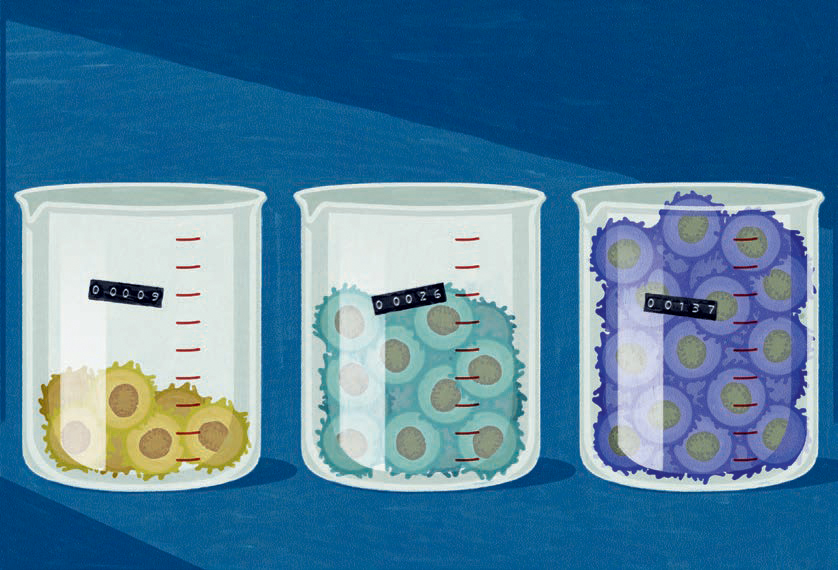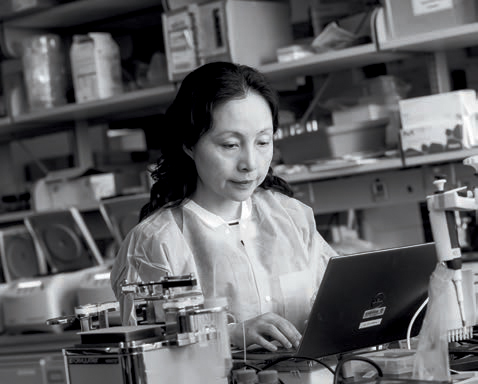
Inside the Jiang Lab
An Inventory of Immunity
The Challenge
In order to create personalized immune therapies, researchers need to untangle what is happening between an individual patient’s immune cells and the antigens that they interact with on a molecular level. Immune cell-antigen interactions need to be understood in four different areas in order to create a full picture: the unique genetic sequence of the T cell’s antigen receptors, the antigen specificity of that cell, and both the gene and protein expression of the same cell.
The Status Quo
Prior methods of understanding interactions between T cells and antigens could only get a picture of one or two of these four elements because of technology constraints. Other roadblocks included that cells cultured or engineered in a laboratory setting are not in a natural environment so they won’t express genes or proteins in the way T cells would in the body, and technologies that assess the antigen specificity of T cells were not cost-effective for looking at large numbers of antigens.

Jenny Jiang
J. Peter and Geri Skirkanich Associate Professor of Innovation in Bioengineering
The Jiang Lab’s Fix
The lab of Jenny Jiang, J. Peter and Geri Skirkanich Associate Professor of Innovation in Bioengineering, developed a technology called TetTCR-SeqHD, which solves these problems. Using this technology, scientists can now simultaneously profile samples of large numbers of single T cells in the four dimensions using high- throughput screening.
Healthy humans can have hundreds of billions of T cells in their bodies, and these cells are specialized to respond to different antigens. This is further complicated by the fact that the T cells that respond to antigens like those delivered in vaccines are different in different individuals. Two different individuals’ T cells will not have the same set of T cell antigen receptors in their vaccine-responding cells, even though they received the same vaccine.
The Jiang Lab’s technology is essentially a method for getting a “full-body scan” of an individual’s T cells and creates a catalog of the different types of T cells and the antigens they respond (or don’t respond) to, paving the way for the ability to better target immune therapies to an individual patient.
To create this catalog, hundreds of thousands of T cells are mixed with hundreds of antigens in a test tube and allowed to bind. Afterward, those cells are separated inside a machine that has hundreds of thousands of micro- wells that each hold only a single cell. The individual cells are broken down and the genetic material is captured on a barcoded microbead, which is then used for sequencing and amplification so that researchers can identify the types of T cells according to the antigens they responded to and how many of those cells there are.
“Individual T cells are unique, and that’s the challenge of using one treatment to fit all,” says Jiang. “Identifying antigen specificity and creating therapies that target that specificity in an individual’s T cells will be key to truly personalizing immune therapies in the future.”
Text by Olivia McMahon / Photo by Kevin Monko/ Illustration by Pete Ryan
